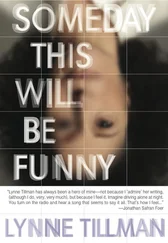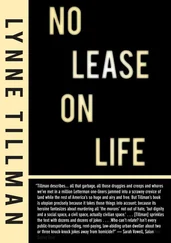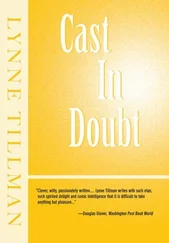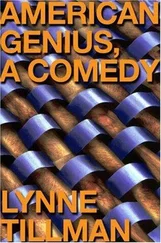A naked gaze forced the viewer’s look to rebound onto itself, which may not make a pleasant picture. Consciously, unconsciously, viewers hold points of view and attitudes about what’s pictured. If it is hard to look at or turn away from an Arbus photograph, it may be because viewers experience unwanted or unclear impulses — disgust, loathing, fascination. Arbus’s photographs work with and against self-disguise.
Art-conscious characters know that, early in the 20th century, Marcel Duchamp threw the seminal art screwball, but his work provoked a mostly sectarian response, testing institutional limits and aesthetics. Arbus’s photographs ripped up the “benign-looking contract.” There is no social contract anymore.
Do “others” see themselves as “other”? No, she or he is not marginal in his or her life. And, whoever “they” are, they probably view and shoot too. Anyone can “exploit” anyone on TV, and many do. So, “willing” or “unwilling” participation begs new ethical definitions. There’s power, advantages. I’m longing for an elastic dictionary. Fortunately, it’s football season in the US. But the concussions suffered in that game.
In work and love, people get boxed in, edged out, ruined; others find acceptance, win prizes and are vied for. A few are venerated, even adulated. True meritocracies are rare. Talent aside, whatever it is, human beings, like other animals, favor their own, cautiously adopting outsiders, especially those who will keep treasure close. A sociologist once told me that the only outcome your college statistically and reliably predicts is your marriage partner.
Our aggressive species has its survival methods, which usually relate to competition. Class, race, ethnicity, religion, sex: These categories for exclusion and inclusion were long ago transformed into naturalized or so-called civilized mechanisms. Snobbery persists based on these dubious categories. Self-described snobs, necessarily deluded, sit on top of this survivalist heap, priding themselves on their taste. “Taste,” in this instance, connotes “good” but everyone has taste or preferences. “I prefer not to,” declared Bartleby. He had no taste for copying anymore.
Calvin Tomkins’ book, Marcel Duchamp: The Afternoon Interviews (Badlands Unlimited, 2013), is my latest friend. Tomkins met Duchamp in 1959 to interview him for Newsweek magazine; over time, the art critic and artist became friends. Of Tomkins’ many books, two earlier publications are on Duchamp: The Bride and The Bachelors (1965) and Duchamp: A Biography (1996).
Duchamp talked to Tomkins about taste: “Taste is an experience that I try not to let into my life. Bad, good or indifferent, it doesn’t come in. I’m so against interior decorators. You don’t have to be happy or unhappy about it, you see?. Taste can’t help you understand what art can be.”
Taste is a five-letter word no one discusses. Mentioning it, I notice friends and colleagues look at their menus or their nails. Mumbling begins, then silence. I’m not kidding, completely. People like to believe their sensibilities, approaches or attitudes have been educated, nurtured or expanded beyond mere taste, “bad, good or indifferent.” It is also a matter of taste not to appreciate taste.
Duchamp distinguishes between the “onlooker” and the artist. “The priority of the connoisseur or whatever you call him isn’t to speak the same language as the artist [.] But don’t say the artist is a great thinker because he produces it. The artist produces nothing until the onlooker has said, ‘You have produced something marvelous.’ The onlooker has the last word on it.” Duchamp holds that these formations — artist and onlooker — perceive the same object differently, having very different aims. But the onlooker will determine the worth and fate of the art(ist).
Conversations among artists and writers about work often center on “how to make it work.” Craft, materials and considerations of space regularly come into discussion — work talk. Periodontists see diseased gums, wherever they are, just as musicians and composers hear with other ears.
I regularly question my preferences. Why I like or dislike writing, a photograph. I don’t trust experience, even if it has shaped me; I don’t fervently trust what I think or believe, while I believe it still. A pox on absolutes! I could trace a genealogy of what I think and like, which is, to some extent, what I was exposed to, taught, made conscious of, and decided not to be or accept. Tendrils of difference and objections sprouting rebellions and self-discoveries — I could list them. But I couldn’t create an order for my character, and hold it/me to a neat line. (When I learned to write, I wrote fast, not on the lines, only below or above.)
My preferences change and change again. Once I believed, doing studio painting with Ron Gorchov and Doug Ohlson, that the figure would never return. Once, involved in showing and making experimental films, I believed Hollywood movies were uninteresting. One night, watching a structuralist-materialist black-and-white film of its celluloid grain, I asked myself: “Why am I watching this?” Like Bartleby, I preferred not to, anymore. Whatever I’ve “renounced” resides somewhere, pinging and ponging, because ideas live on, more or less alive in different moments. Being for or against something now is less interesting to me than understanding what it does, how it does it, and why it’s being done.
Which brings me to the art world’s obsession with decadeism. The so-called literary world stores much less faith on periods of emergence. The new is treasured more in visual art than in writing; the literary world is backward in so many ways, and I will not count them. But a first book comes out in 1991, say, and the year stops being of interest, with the next book, whenever it comes out, which counts more, and then the next. A writer is thought to mature, even to write better and know more. The actual age of the writer matters today as a form of “branding,” but the brand becomes old, just as the writer will.
Artists get pinned to a decade. It’s as if time had stopped, the artist suspended in it. Artists think in and through their work, during all the decades after the one in which they debuted. If humans weren’t perverse, in Postmodernity the “post” would become valuable.
People now live so long, many past 100. Extended middle and old-age pushes youth further and further back in time, making being young really a thing of the past. Something interesting could emerge from that.
At a conference called “Schizo-Culture,” held at Columbia University in 1975, the speakers were magnetic and illustrious: William Burroughs. R.D. Laing. John Cage. The audience — graduate students, artists, writers and freelance intellectuals. Later on, “Schizoculture,” organized by Sylvère Lotringer, would be billed as the conference that launched French theory in America.
The gathering took place in a lecture hall or auditorium that seated about 300 people, a raucous, animated group, who heard, for instance, about psychoanalyst Jacques Lacan, and were told that “the unconscious is structured like a language.” R.D. Laing said that graduate students were the most depressed population in any society.
All day, men — no women — took the microphone and spoke. There was always a buzz in the audience, whispers, an audible hum of excitement. Then it was time for John Cage. He walked onto the stage and began to speak, without the microphone. He stood at the center of the small stage and addressed the crowd. He talked, without amplification, and soon people in the audience shouted, “We can’t hear you, use the mic. We can’t hear you.” John Cage said, “You can, if you listen.” Everyone settled down, there was no more buzz, hum or rustling, there was silence, and John Cage spoke again, without the microphone, and everyone listened and heard perfectly.
Читать дальше












